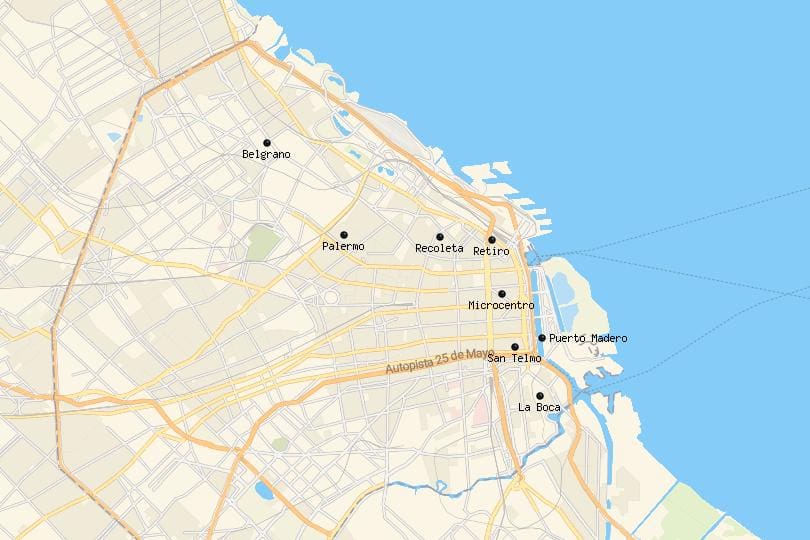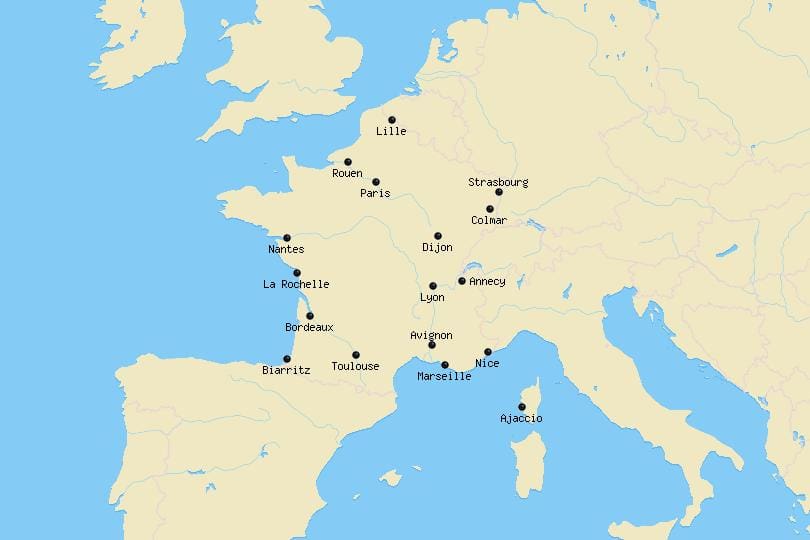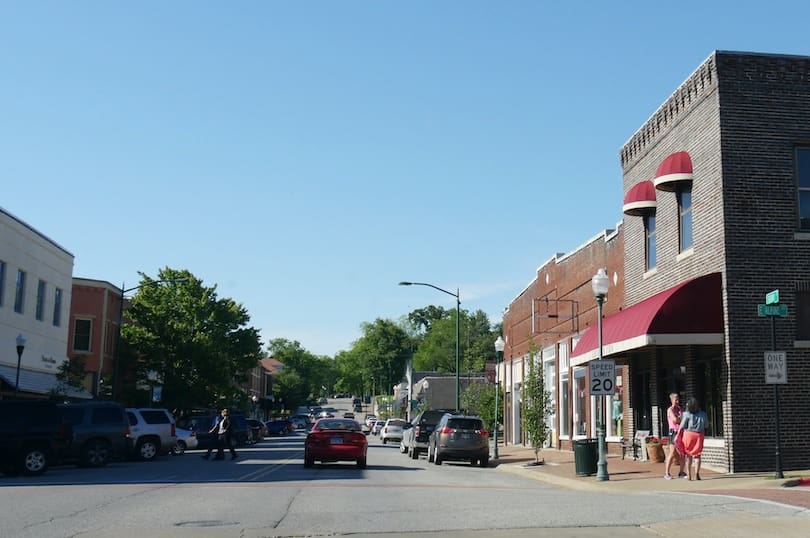Looking for the best places to stay in Buenos Aires? This comprehensive guide will help you explore the top areas and hotels in the vibrant Argentine capital, ensuring a memorable and enjoyable experience.
Introduction
Welcome to Buenos Aires, a city filled with rich history, vibrant culture, and a bustling atmosphere. Whether you’re a first-time visitor or a seasoned traveler, finding the right place to stay is crucial to make the most of your trip. This guide aims to provide you with valuable insights and recommendations on the best areas and hotels in Buenos Aires, ensuring that your visit is nothing short of extraordinary.
Where to Stay in Buenos Aires: Best Areas & Hotels
1. Palermo – A Trendy Haven
Palermo is one of Buenos Aires’ trendiest neighborhoods, offering a perfect blend of bohemian charm and modernity. This vibrant area is divided into sub-neighborhoods, such as Palermo Soho and Palermo Hollywood, each with its unique character and appeal. With an array of boutique shops, art galleries, cafes, and nightlife spots, Palermo is the go-to destination for young and hip travelers.
2. Recoleta – Elegance and Culture
Recoleta exudes elegance and sophistication, attracting travelers seeking a more refined experience. The neighborhood is home to the iconic Recoleta Cemetery, where the remains of Eva Perón rest. Besides the cultural allure, you’ll find luxury hotels, upscale boutiques, and a host of gourmet restaurants in this exclusive area.
3. San Telmo – Old-World Charm
For a taste of Buenos Aires’ history and tango culture, San Telmo is the place to be. Cobblestone streets, colonial architecture, and a bohemian atmosphere characterize this neighborhood. Don’t miss the famous San Telmo Market, where you can find unique antiques, artisan crafts, and delightful street performances.
4. Puerto Madero – Modern Waterfront Living
Puerto Madero, once a derelict dockland, has transformed into a chic waterfront district. Stroll along the riverbanks, dine in stylish restaurants, and enjoy stunning views of the city skyline. This area is perfect for those seeking a modern and luxurious stay.
5. Microcentro – Urban Hub
If you prefer to stay in the heart of the city, Microcentro is the business and financial center of Buenos Aires. It boasts iconic landmarks such as the Obelisk and the historic Plaza de Mayo. While this area is bustling during weekdays, it offers a more serene atmosphere on weekends.
6. La Boca – Colorful and Artistic
La Boca is famous for its colorful houses and the passionate Boca Juniors football club. While it is a popular tourist spot during the day, it’s advisable to be cautious at night. Visit the Caminito street, where artists display their talents and tango dancers captivate audiences.
7. Belgrano – Residential Charm
Belgrano is a peaceful and leafy neighborhood, known for its elegant residential streets and green spaces. It’s an ideal area for families and travelers seeking a quieter atmosphere. Don’t miss the Chinatown district for delicious Asian cuisine.
8. Almagro – Local Vibe
For a more authentic local experience, Almagro offers a laid-back vibe with a mix of traditional and modern elements. This neighborhood is known for its milongas, where you can experience the true essence of Argentine tango.
9. Caballito – Hidden Gem
Caballito is a lesser-known gem in Buenos Aires, providing a relaxed ambiance and a range of local eateries. It’s a great area to experience everyday life in the city without the tourist crowds.
10. Villa Crespo – Artsy and Hip
Villa Crespo is rapidly gaining popularity among young artists and creatives. This up-and-coming neighborhood offers a lively atmosphere with art studios, theaters, and a burgeoning food scene.
11. Once – Cultural Melting Pot
Once, also known as Abasto, is a multicultural district with a strong Jewish heritage. It’s a lively area, known for its bustling markets, diverse cuisine, and historic theaters.
12. Retiro – Central and Convenient
Retiro is a central location with easy access to public transportation and many major attractions. It’s an excellent choice for travelers who want to be close to everything.
13. Plaza de Mayo – Historic Landmarks
Stay near Plaza de Mayo to immerse yourself in Buenos Aires’ history. This area is home to the Casa Rosada, the Metropolitan Cathedral, and many other historical landmarks.
14. Congreso – Political Hub
Congreso is where you’ll find the impressive Argentine National Congress building. This area is well-connected and offers a mix of business and cultural experiences.
15. San Nicolás – Shopping Paradise
For shopaholics, San Nicolás is a dream come true with its countless shopping streets and upscale boutiques. It’s a great place to indulge in retail therapy.
16. Abasto – Tango Essence
Experience the soul of tango in Abasto, where the legendary Carlos Gardel once lived. This neighborhood is full of tango clubs and theaters, perfect for tango enthusiasts.
17. Palermo Chico – Upscale Residences
Palermo Chico is the epitome of luxury living in Buenos Aires, featuring elegant mansions and upscale residences. It’s an exclusive area favored by high-profile residents.
18. Belgrano R – Suburban Serenity
Belgrano R, or Belgrano Residencial, offers a suburban escape with tree-lined streets and peaceful parks. It’s an excellent choice for a tranquil stay.
19. Palermo Viejo – Architectural Charm
Palermo Viejo is known for its beautiful architecture, which reflects the city’s history and cultural heritage. Enjoy exploring the charming streets and discovering hidden gems.
20. Las Cañitas – Dining and Nightlife
Las Cañitas is a lively neighborhood filled with restaurants, bars, and clubs. It’s a great area for nightlife enthusiasts and foodies.
21. Colegiales – Quiet Retreat
Colegiales provides a relaxed and laid-back atmosphere, attracting those who want to escape the city’s hustle and bustle.
22. Villa Devoto – Green Oasis
Villa Devoto is a residential area with ample green spaces, offering a serene escape from the city’s commotion.
23. Balvanera – Cultural Diversity
Balvanera is a melting pot of cultures, boasting a variety of ethnic restaurants and cultural attractions.
24. Parque Patricios – Modern Revival
Parque Patricios is undergoing a revitalization, making it an emerging hotspot for hipster cafes and creative spaces.
25. Palermo Botánico – Nature Lover’s Paradise
Palermo Botánico is home to the city’s Botanical Garden and a haven for nature enthusiasts seeking tranquility amidst greenery.
Where to Stay in Buenos Aires: Best Hotels
Now that we’ve explored the best areas, let’s dive into some of the top hotels in Buenos Aires that cater to different preferences and budgets.
- Luxury Living at Alvear Palace Hotel: The Alvear Palace Hotel is an iconic landmark, synonymous with luxury and elegance. Located in Recoleta, this hotel offers lavish suites, exceptional service, and gourmet dining.
- Boutique Charm at Home Hotel: In the heart of Palermo Hollywood, Home Hotel provides a boutique experience with unique design and a relaxing pool area. It’s a haven for creative souls.
- Historic Grandeur at Park Hyatt Buenos Aires: Set in a restored Belle Époque palace, the Park Hyatt Buenos Aires in Recoleta offers timeless elegance and modern comfort, making it a top choice for discerning travelers.
- Trendy Stay at Fierro Hotel: Fierro Hotel, located in Palermo Hollywood, combines contemporary design with personalized service, making it a favorite among trendsetters.
- Urban Oasis at Faena Hotel Buenos Aires: Faena Hotel in Puerto Madero offers a luxurious experience with its avant-garde design and breathtaking views of the city skyline and the river.
FAQs
Is Buenos Aires safe for tourists?
Buenos Aires is generally safe for tourists, but like any major city, it’s essential to take precautions. Stick to well-lit and busy areas, avoid displaying valuables, and use authorized taxis or ride-sharing services.
What is the best time to visit Buenos Aires?
The best time to visit Buenos Aires is during the spring (September to November) and autumn (March to May) when the weather is pleasant. Summers can be hot and humid, while winters are mild but occasionally chilly.
How is the public transportation in Buenos Aires?
Buenos Aires has an extensive public transportation system, including buses and the Subte (subway). The Subte is the fastest and most convenient way to get around the city.
Is it customary to tip in Buenos Aires?
Tipping is not obligatory, but it’s appreciated for good service. In restaurants, a 10% tip is common, and you can round up taxi fares or leave some change for service providers.
What are some must-try dishes in Buenos Aires?
Don’t miss trying Argentina’s famous beef dishes, such as a juicy steak or a traditional asado (barbecue). Empanadas and dulce de leche-based desserts are also delicious must-tries.
How to experience tango in Buenos Aires?
You can experience tango in various ways, from attending a tango show to taking tango lessons. Milongas are social dance events where locals and visitors can dance tango together.
Conclusion
Buenos Aires offers a diverse range of areas to stay, each with its unique charm and appeal. From the trendy streets of Palermo to the elegant ambiance of Recoleta, you’ll find an array of options to suit your preferences. Choose from luxurious hotels to boutique accommodations and experience the vibrant culture and history that Buenos Aires has to offer. Remember to plan your trip according to the best time to visit, and immerse yourself in the city’s rich heritage, art, and tango traditions.


















